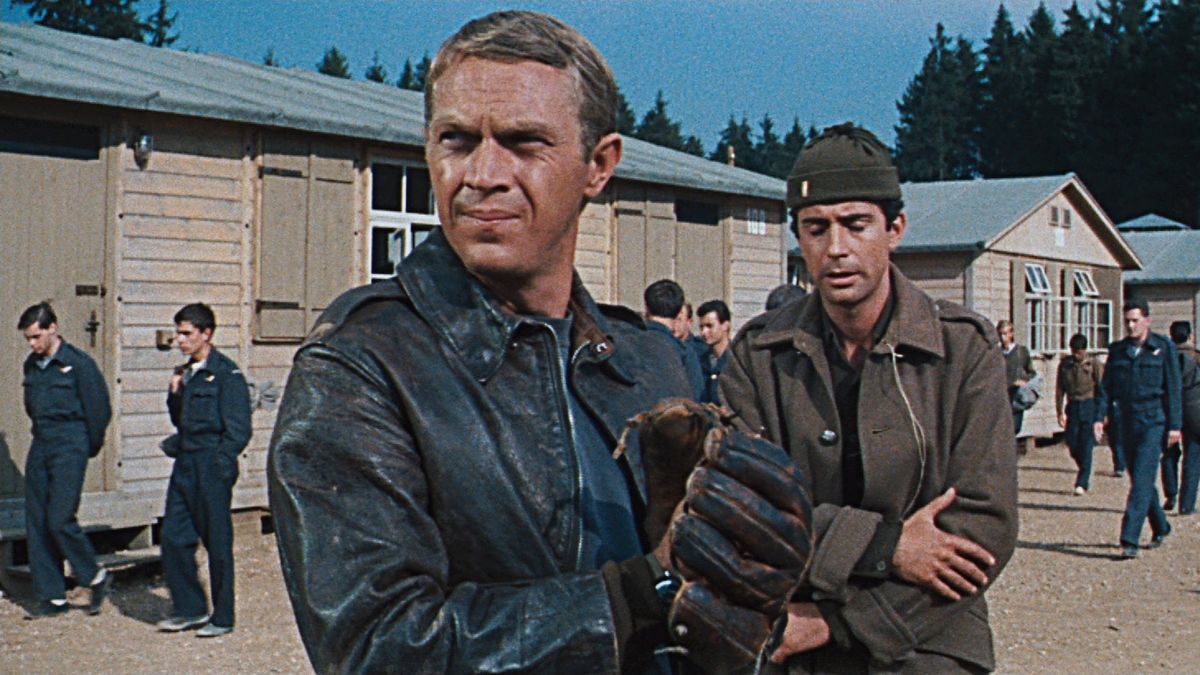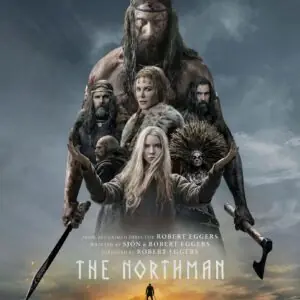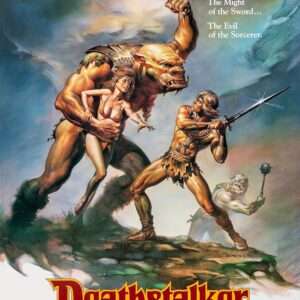The Great Escape, directed by John Sturges and released in 1963, stands as one of the most iconic and enduring war films in cinema history. Based on Paul Brickhill’s 1950 non-fiction book of the same name, the film dramatizes the true story of a mass escape by Allied prisoners of war (POWs) from the German POW camp Stalag Luft III during World War II. Featuring a star-studded cast, gripping narrative, and a memorable score by Elmer Bernstein, The Great Escape is a testament to resilience, bravery, and the indomitable human spirit.
Plot Overview
Set in 1943, the film centers around a group of Allied soldiers known for their repeated escape attempts, who are imprisoned in the newly established Stalag Luft III, designed to be “escape-proof.” Determined to defy their captors and aid the war effort by forcing the Germans to allocate resources to recapture them, the prisoners devise an ambitious plan to tunnel their way to freedom.
The escape is masterminded by Squadron Leader Roger Bartlett (Richard Attenborough), known as “Big X,” who orchestrates the construction of three tunnels named “Tom,” “Dick,” and “Harry.” The film follows key characters including Captain Virgil Hilts (Steve McQueen), the “Cooler King” renowned for his rebellious nature; Flight Lieutenant Robert Hendley (James Garner), the “Scrounger” responsible for acquiring materials; and Flight Lieutenant Danny Velinski (Charles Bronson), the “Tunnel King,” who suffers from claustrophobia but perseveres to dig the escape route.
As the escape plan unfolds, the prisoners face numerous challenges, including security checks, resource shortages, and personal fears. Ultimately, 76 men manage to escape before the tunnels are discovered. However, their journey is far from over, as they face perilous pursuits across German-occupied territory. Tragically, most escapees are recaptured, and 50 are executed on direct orders from Hitler. Despite the tragic outcome, the escape remains a significant act of defiance and courage.

Characters and Performances
The ensemble cast of The Great Escape delivers memorable performances that bring depth and authenticity to their roles:
- Steve McQueen as Captain Virgil Hilts is iconic for his cool demeanor and rebellious spirit. His motorcycle chase scene is one of the most memorable sequences in film history.
- Richard Attenborough portrays the determined and strategic “Big X,” embodying leadership and sacrifice.
- James Garner brings charm and ingenuity to the role of Hendley, skillfully navigating the black market within the camp.
- Charles Bronson offers a compelling performance as Danny, showcasing vulnerability and strength as he battles claustrophobia while digging the tunnels.
- Donald Pleasence as Flight Lieutenant Colin Blythe, the “Forger,” portrays the tragic character who battles deteriorating eyesight but remains determined to contribute.
Each character contributes to the film’s narrative, reflecting various aspects of courage, resilience, and camaraderie.
Themes and Symbolism
The Great Escape explores several profound themes:
- Freedom and Resistance: The prisoners’ determination to escape symbolizes the universal desire for freedom and resistance against oppression.
- Camaraderie and Sacrifice: The deep bonds formed among the prisoners highlight themes of loyalty and collective sacrifice.
- Human Spirit and Perseverance: Despite overwhelming odds, the characters’ unwavering commitment to their plan illustrates the resilience of the human spirit.
The film also uses symbolism effectively. The tunnels represent hope and the possibility of liberation, while the open landscapes post-escape symbolize both freedom and the daunting challenges ahead.

Cinematic Techniques
John Sturges’ direction ensures a balanced mix of suspense, drama, and action. The film’s pacing effectively builds tension, particularly during the tunnel escape sequences. The cinematography captures both the claustrophobic environment of the tunnels and the expansive, dangerous terrains of Germany.
Elmer Bernstein’s iconic score enhances the film’s emotional impact, blending a sense of adventure with underlying tension. The music, particularly the main theme, has become synonymous with the film’s spirit of defiance and bravery.
Historical Accuracy and Creative License
While The Great Escape is based on true events, certain elements were dramatized for cinematic effect. For instance, the famous motorcycle chase by Hilts did not occur in reality, but it serves to heighten the film’s excitement and showcase McQueen’s persona. Additionally, the characters are composites or fictionalized versions of real individuals.
Despite these creative liberties, the film remains faithful to the essence of the actual escape and its significance as an act of courage and defiance against tyranny.

Impact and Legacy
Upon its release, The Great Escape received critical acclaim and became a commercial success. It has since achieved classic status, admired for its storytelling, performances, and historical significance.
The film influenced popular culture, inspiring subsequent movies and references in various media. It also contributed to the iconic status of Steve McQueen as a cinematic legend. Moreover, the film honors the bravery of the real-life POWs and keeps their story alive for future generations.
Conclusion
The Great Escape (1963) is more than a war film; it is a powerful narrative about human resilience, the thirst for freedom, and the strength found in unity. Its compelling characters, masterful direction, and enduring themes continue to resonate with audiences worldwide. As a cinematic tribute to courage and sacrifice, The Great Escape remains a timeless classic and a poignant reminder of the cost of freedom.





